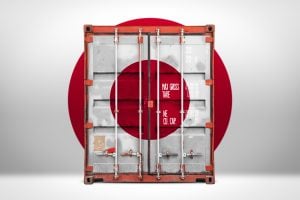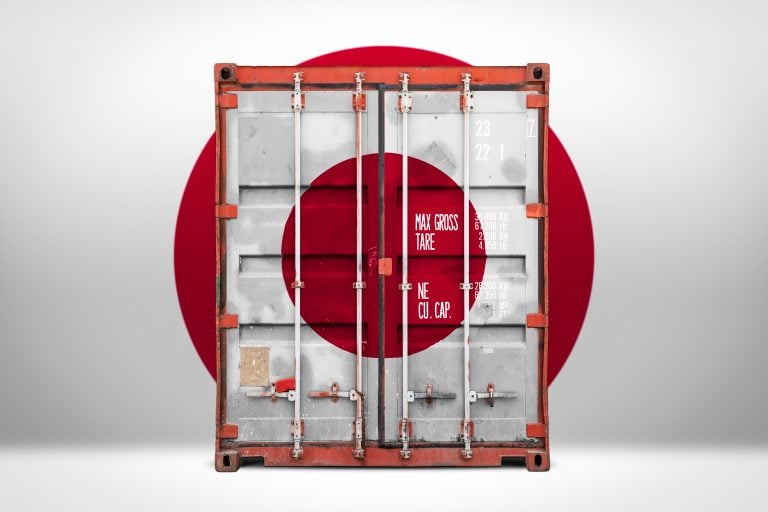MoneyTalks is Stockhead’s regular drill down into what stocks investors are looking at right now. We’ll tap our extensive list of experts to hear what’s hot, their top picks, and what they’re looking out for.
After threatening for a while to break out, Japanese stocks markets this week finally shifted gears higher into a new era for local equities.
The Nikkei 225 average clocked the new record high after markets surged again on Thursday, and considering the fireworks on display overnigtht during the New York session, the new highs won’t remain new for too long.
According to Sydney-based global investor Nanuk Asset Management’s Marie Miyashiro, the performance of Japanese equities this year continues to look strong.
“Markets in Tokyo will likely be underpinned by structural changes, as corporate government improvements make the market more attractive to investors, despite fears that the nation is slipping into a recession.”
And more than likely enjoy the ongoing attention of and enthusiasm from overseas investors.
By close of trading on Thursday, the Nikkei hit 39,098.68, whacking the previous all-time high of December 1989.
Last Friday, the benchmark surpassed the 38,800 mark, approaching the 1989 record that was set during the economic boom of the bubble era. It eventually closed at 38,487.24 — up some 329.30 points from the previous day.
The Nikkei index has certainly found its footing so far this year – driven into a near frenzy by a string of factors from the concomitant weakness of the yen and the vigour of the greenback to corporate reforms and the influx of foreign investment inspired by the excitement of names like Warren Buffett.
The continued depreciation of the yen has been a slap to Japan’s overseas spending power, but it’s proved advantageous for foreign raiders.
But all of this has come as Japanese officials institute corporate governance reforms that Marie says helped boost the Japanese market’s allure.
“Last year, the Tokyo Stock Exchange (TSE) revamped its market restructuring rules. Among the measures was the requirement for listed companies to ‘comply or explain’ if the stock is trading at a price to book ratio below one.
“These companies need to disclose their plans for improvement, with the view towards how they can increase their long-term corporate value,” Marie says.
“Listed Japanese companies are now more committed to improving their corporate governance and materialise shareholder value. For investors, this creates an opportunity to benefit from improved corporate financial performance and a higher stock market multiple.”
Nanuk also highlights the acceleration in the unwinding of cross shareholdings among listed companies, which Marie says should encourage further foreign investment into the market.
“Additionally, the recently revamped Nippon Individual Savings Account (NISA) program further incentivises domestic households to invest in equities.”
Initially introduced in 2014, the Japanese Government initiative allows equity investments in a tax-exempt NISA account for a lifetime, which Miyashiro notes as an additional driver of domestic retail market participation.
“Given that only around 15% of the local population have taken out of one these accounts, there remains a significant scope for growth, as the Government continues to look at ways to incentivise residents to invest towards their retirements.”
Recessions and market records
The strength of the Japanese equities market comes as the nation’s economy slips into a recession following the contraction of GDP for two straight quarters.
“Fears around recession will likely prolong a stimulative monetary policy in Japan, resulting in a prolonged weak yen environment, benefiting exporters,” Miyashiro said.
In line with Nanuk’s investment philosophy focused on sustainability, Miyashiro is seeing value across multiple sectors and companies within the market.
Semiconductors – ceramic capacitors – extreme ultraviolet lithography
Marie says Japan remains at the forefront of the AI inspired semiconductor revolution.
Her top picks across the Nikkei include Advantest Corp (6857) a top manufacturer of testing equipment for the semiconductor industry, and Murata (MRAAF), a global leader in ceramic capacitors used in many electronic devices including smartphones, automobiles and datacentres.
And Lasertec (LSRCF) is a semiconductor mask and mask blank inspection equipment manufacturer with a monopoly in mask testing using an EUV light source.
Via Morningstar
Murata
Marie says Murata manufacturing is a pretty big name in an unlikely field of the semiconductor/AI surge.
“Murata is global leader in ceramic capacitors used in many electronic devices including smartphones, automobiles and datacentres.”
Another Murata enthusiast is Morningstar director Kazunori Ito.
Kazunori – in a note this week following Murata’s earnings update – particularly likes the specialist manufacturer’s grip on market share.
“Murata is also a top supplier of passive components, such as the multilayer ceramic capacitor, or MLCC (40% global share), and surface acoustic wave, or SAW, filters – accounting for some 40%-45% of global market share,” says Ito.
“While we acknowledge that shipments of digital devices are slowing down, we believe progress in telecommunications technology will be the driver to increase content per device.”
Last fiscal year, circa 44% of Murata’s sales were MLCCs, 4% were piezoelectric components including SAW filters, 10% were other passive components, and 20% were modules.
“Murata is achieving high profitability on the components business (MLCCs, SAW filters, and other passive components), compared with that on the modules business (30.6% margin for components versus 2.7% for modules in fiscal 2022), and we believe Murata’s strength in components will deliver maintainable excess returns on capital,” Ito says.
Lasertec
Lasertec is a semiconductor mask and mask blank inspection equipment manufacturer and the world’s only maker of semiconductor inspection equipment which leans on tech using extreme ultraviolet mask lithography technology*.
*ED: For anyone wishing to get right into the science of extreme ultraviolet lithography (EUVL) technology, then there’s the link, see you in six hours.
More than 70% of the chip-measuring maker’s revenue comes from major chipmakers Intel, Samsung and Taiwan Semiconductor Manufacturing. Chinese sales account for less than 10% of its global sales.
Miyashiro says Lasertec currently enjoys a monopoly in mask testing using an EUV light source.
“Its main competitor in the space is KLA but as of yet, they don’t have a competing product; hence, Lasertec has a dominant share in the EUV mask testing equipment market.”
Advantest Corp
Miyashiro says Advantest Corp makes mechatronic products – basically automatic test and measurement equipment used in the design and production of semiconductors – and the various applications for use are right across the board, including 5G comms, the Internet of Things (IoT), autonomous vehicles, high-performance computing (HPC), including artificial intelligence (AI), machine learning… the list goes on.
The share price momentum for Advantest over the last 12 months has been widely regarded as Nvidiaesque – one of Japan’s top beneficiaries of the AI equity boom.
Advantest makes exactly the sort of leading-edge systems and products which get integrated into almost all the advanced semiconductor production lines worldwide.
The company also conducts R&D to address emerging testing challenges and applications; develops advanced test-interface solutions for wafer sort and final test; produces scanning electron microscopes essential to photomask manufacturing; and offers system-level test solutions and other test-related accessories.
“We see other opportunities in the market that we continually assess to potentially add into our portfolio.”
The views, information, or opinions expressed in the interviews in this article are solely those of the interviewees and do not represent the views of Stockhead.
Stockhead does not provide, endorse or otherwise assume responsibility for any financial product advice contained in this article.
The post MoneyTalks: Marie is Big in Japan even as recession hits and stocks rampage appeared first on Stockhead.




















